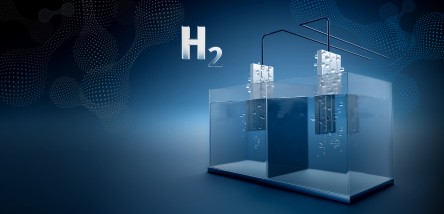Why do we need safe hydrogen?
Hydrogen is highly reactive and highly flammable. High temperatures, pressure, and electrical voltage interact during production. Functional safety is not an optional extra here, but a must – for reliable and safe operation.

Electrolysis: The central step in hydrogen production
In an electrolyzer, water is split into hydrogen and oxygen using electricity. Both gases must be safely separated and routed. Automated processes help to increase security and optimize workflows at an early stage. This helps to avoid dangers.
What are the specific risks?
Electrolysis produces explosive gas mixtures. Leaks, incorrect valve design, or defective sensors can be dangerous. Safety-relevant components – such as pressure vessels and measuring systems – must therefore function reliably.

How mandatory SIL standards help
The IEC 61508 standard of the International Electrotechnical Commission (IEC) defines how companies worldwide must develop and operate safety-critical systems. It applies across all industries and forms the basis for many other safety standards.
For the process industry, the IEC has derived the IEC 61511 standard from this. This standard is aimed at plant operators in sectors such as chemicals, oil & gas, or pharmaceuticals; it describes the practical implementation of functional safety.
Both standards use SIL levels (Safety Integrity Levels 1 – 4) to determine the required level of risk reduction. This allows hazards to be specifically assessed and suitable protective measures implemented.
Why is SIL so important for hydrogen production?
Safe hydrogen is hardly conceivable without SIL. SIL-compliant systems detect faults automatically, react reliably, and bring plants into a safe state. This not only protects people, but also machines and the environment.
How do you meet the SIL requirements?
It is not enough just to safeguard individual components. For safe operation, all parts of a loop – sensors, controls, and actuators – must interact optimally, and possible risks must be assessed. This includes consulting, planning, and suitable products for your system. A common misconception is that implementation is expensive. In truth, functional safety saves money through fewer breakdowns, less servicing, and a longer service life.
Safe hydrogen with automation
With the right partner, safety can be planned. Festo supplies tried-and-tested automation technology – from smart sensors and modular control systems to entire control cabinets. Everything is geared towards the safe production of hydrogen. We have many years of experience in relevant industries, such as the chemical industry, and we support you from the initial idea to commissioning.
Your checklist for safe hydrogen production
☑ Know the risks involved in hydrogen production
☑ Apply SIL 61508 as a binding safety standard
☑ Analyze risks and provide targeted protection
☑ Choose experienced partners with standards and industry expertise
☑ Use automation with tried-and-tested components and systems
☑ Produce hydrogen safely and efficiently with Festo